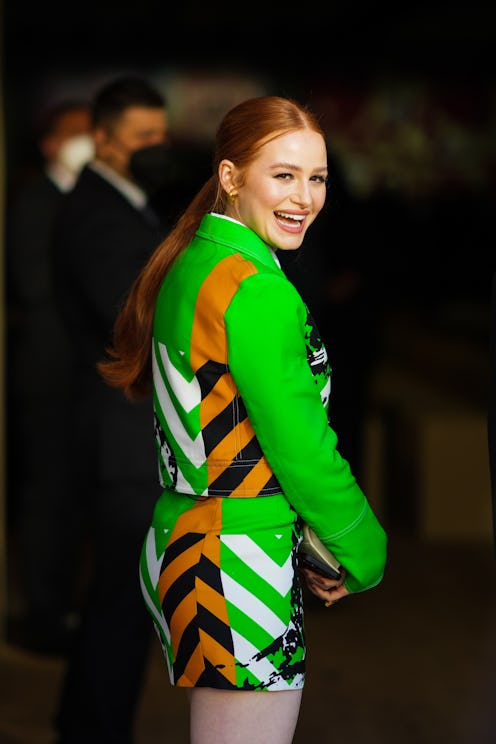Style
Does Dopamine Dressing Really Work? Psychologists Weigh In
Apparently your outfit does affect your mood.

You know the age old saying “when you look good, you feel good?” Well, it turns out there might be some science to back that up.
The term ‘dopamine dressing’ was dubbed a big-time 2022 Pinterest trend, but what exactly does that mean? According to Dr. Carolyn Mair, author of The Psychology of Fashion, “Dopamine motivates us to seek a reward. So, scientifically speaking, dopamine dressing refers to a person’s motivation to dress in a way that will result in a positive outcome, like feeling more confident, competent, or happy.”
Industries outside of the fashion world have been utilizing this idea for years — hence why many bathrooms are painted blue (calming) and restaurants use those iconic red booths (makes you hungry). Or why you always felt anxious seeing a test graded in red ink, even if you scored 100 percent. According to VeryWell, certain colors can influence mood, and can even have a physiological response, like increased heart rate.
Pantone referenced this concept for their 2021 color(s) of the year, Illuminating and Ultimate Gray, which were chosen to represent the strength and fortitude that was thematic of 2020, brought together with positivity and hopefulness in looking forward to 2021.
Fashion Psychologist and Professor at the Fashion Institute of Technology Dr. Dawnn Karen discusses the idea of dopamine dressing in her book Dress Your Best Life. She initially explored the topic with her theory on mood enhancement dress, eventually nicknaming it “dopamine dressing.”
She explains that this can be achieved through colors, textures, and prints that illicit positive emotions. For example, yellow is the number one color, according to Karen, that is connected to joy and hope. This can also be true of textures and patterns connected to a happy memory, like a cashmere sweater that reminds you of your mother or leopard print to make you feel fierce.
Karen also describes the concept of mood illustration dressing, which she describes as: “dressing in a way that expresses and perpetuates your current emotional state.” So that explains why my depressive episodes usually include week-old sweats covered in microwave ramen stains. Or why I always wear a bright colored pantsuit when I’m feeling like a boss b*tch.
The COVID-19 pandemic has drastically impacted fashion and mental health, which seem like unrelated concepts, but in reality the two are closely connected. This explains why consumers turned to comfortable clothing, like athleisure, during times of social turmoil.
As Karen explains: “The pandemic caused a shift where people had to assess their wardrobe and form a new relationship with their clothing... Pre-pandemic people dressed for external factors — the weather, their friends, location etc. Post-pandemic people are now dressing for internal factors such as how they feel.”
This article was originally published on